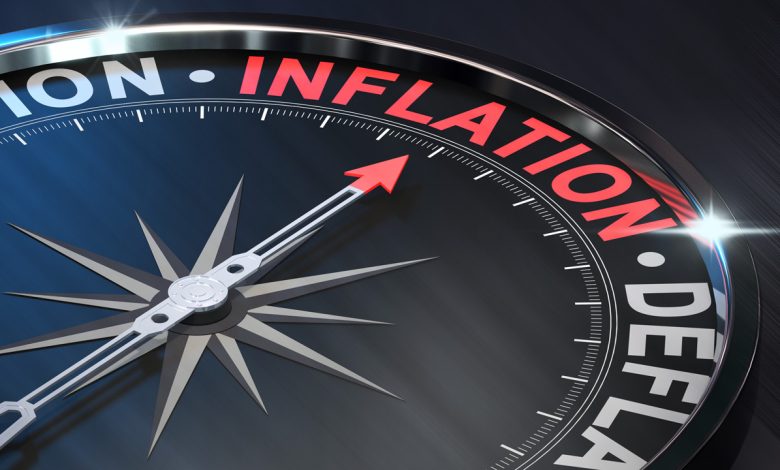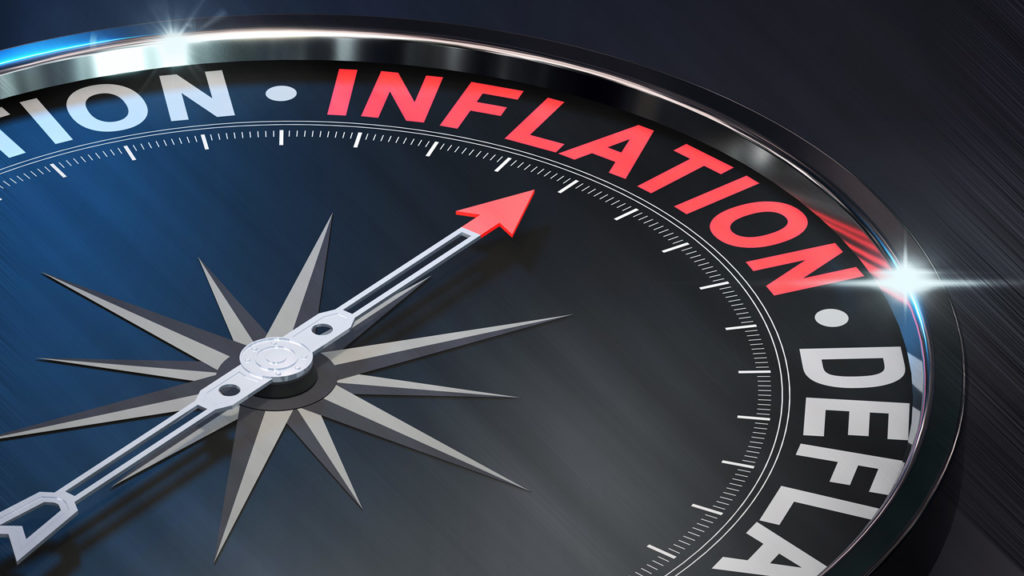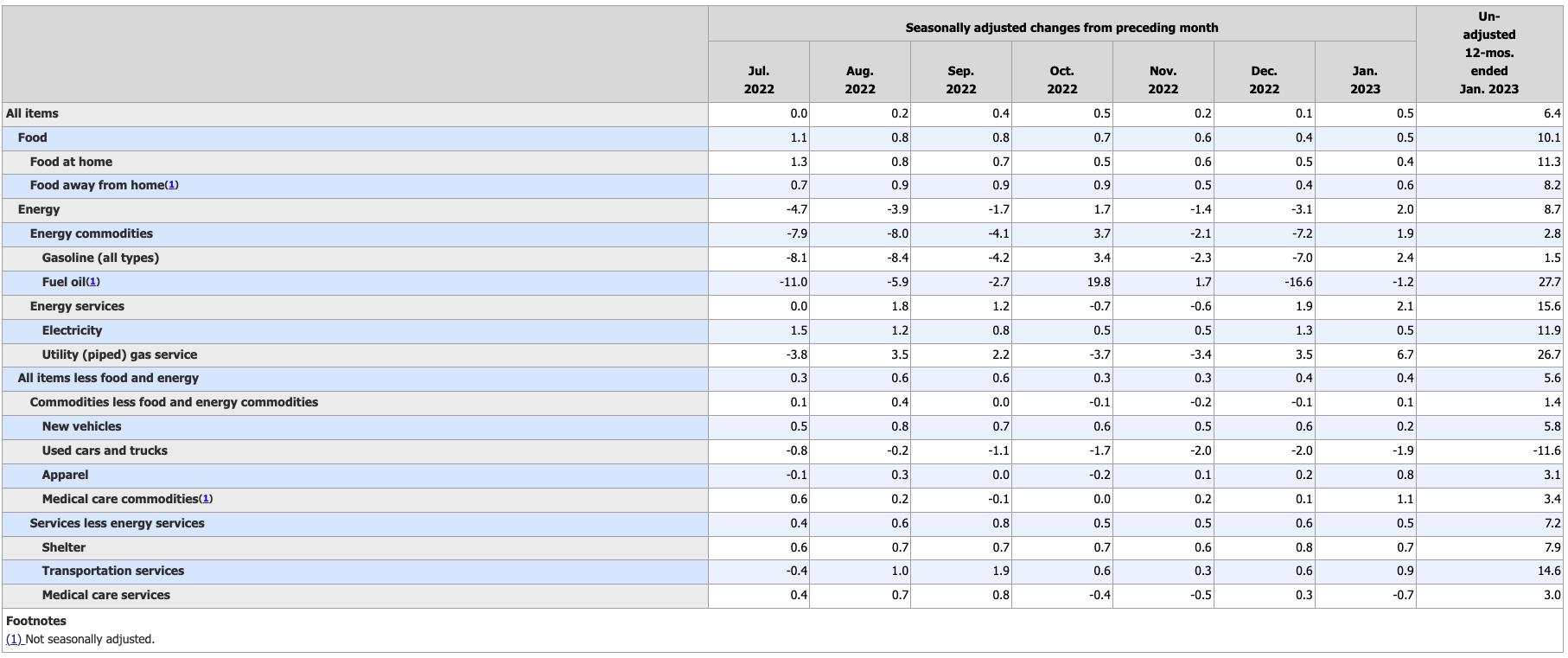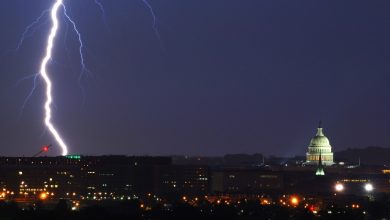January CPI Throws Cold Water on “Disinflation” Narrative

After the December Consumer Price Index (CPI) report, the mainstream was giddy. “Inflation is over!” they proclaimed. “The Fed is winning the inflation fight!” they cried. “We are entering a period of disinflation!” they insisted.
Well, the January CPI report threw cold water on that disinflation narrative.
Every metric in the January CPI data came in hotter than expected.
The headline number of a 6.4% increase in prices was down a tick from the 6.5% increase in December. That allowed the mainstream pundits to claim that “inflation is still trending downward.” But the headline number was still higher than the 6.2% increase in CPI that was projected.
And a look at the month-on-month numbers calls the “trending downward” assertion into question.
CPI was up 0.5% in January from December. It was the biggest month-on-month increase since June. The expectation was for a 0.4% increase.
If you annualized January’s month-on-month increase, 2023 inflation is on track to come in at around 6%.
Core CPI, (excluding more volatile food and energy prices) rose 0.4% month-on-month. The expectation was for a 0.3% increase. On an annual basis, core CPI was up 5.6%.
Keep in mind, inflation is worse than the government data suggest. This CPI uses a formula that understates the actual rise in prices. Based on the formula used in the 1970s, CPI is closer to double the official numbers.
The only price categories that fell in January were fuel oil (not seasonally adjusted), medical services, and used cars. Every other category charted an increase.
In other words, you’re paid more for almost everything in January than you did in December.
So much for disinflation.
After falling five out of the last six months, energy prices rose by 0.6%, driven by a 2.4% month-on-month increase in gas prices. Pundits and analysts like to strip out energy prices because of their volatility. But it’s not like you can strip them out of your budget.
Shelter was up 0.7% month-on-month and food prices rose another 0.5%.
The Bigger Picture
The “disinflation” narrative is in trouble.
Perhaps today’s hotter than expected #inflation data will be a wakeup call to investors that the #CPI improvements in recent months were transitory. The 6.4% YoY rise in Jan. CPI was .2 above expectations and may mark the trough in YoY inflation rates and the end of disinflation.
— Peter Schiff (@PeterSchiff) February 14, 2023
It’s important to note that the headline CPI number remains more than 3 times higher than the mythical 2% target.
The markets initially brushed off the news, but as analysts absorbed the data, the perception turned more bearish. Even if you believe inflation is pulling back, it’s clear the Federal Reserve has not won the fight. That means the much-hoped-for pause in rate hikes seems much less likely.
Dallas Fed President Lorie Logan said, “We must remain prepared to continue rate increases for a longer period than previously anticipated, if such a path is necessary to respond to changes in the economic outlook or to offset any undesired easing in conditions.”
According to Reuters, interest rate futures traders now bet the Fed will raise rates three more times, and push the federal funds rate to the 5.50% range by July.
Gold initially held its ground on Tuesday, but by Wednesday morning, the yellow metal had dropped by about $18 as markets came to grips with the fact the Fed will need to do more to tame price inflation.
The question is how much more can the Fed do before it breaks something in this debt-riddled, bubble-filled economy?
Make no mistake — disinflation is transitory.
Even if the Fed manages to raise rates a few more times and force the CPI to tick down for a few more months, when the economy crashes, it will almost certainly declare victory and begin cutting interest rates. In other words, it will go back to creating inflation.
As Schiff said in an interview after the last Fed meeting, inflation is going to get much worse.
The US economy is addicted to easy money. It is addicted to artificially low interest rates and quantitative easing. You can’t take an addict’s drug away without sending him into withdrawal. The economy can only limp along so long with tighter monetary policy.
There is also the issue of federal government spending. Even the Fed has conceded it can’t slay inflation with monetary policy alone. US government fiscal policy contributes to inflationary pressure and makes it impossible for the Fed to do its job.
Trend inflation is fully controlled by the monetary authority only when public debt can be successfully stabilized by credible future fiscal plans. When the fiscal authority is not perceived as fully responsible for covering the existing fiscal imbalances, the private sector expects that inflation will rise to ensure sustainability of national debt. As a result, a large fiscal imbalance combined with a weakening fiscal credibility may lead trend inflation to drift away from the long-run target chosen by the monetary authority.” [Emphasis added]
Schiff said the Fed will ultimately have to monetize this new debt.
We’ve only seen the beginning of inflation. In fact, Powell said inflation is creating misery for families. It’s the government that is creating that misery — and the Fed — because they’re the ones creating the inflation.”
It’s easy to get caught up in the weekly data releases, but it’s important to keep your focus on the fundamentals and the bigger economic picture. The fact is, the Fed pumped trillions of dollars into the economy starting after the 2008 financial crisis and then doubling down during the pandemic. The price inflation we’re experiencing today is a symptom of that monetary malfeasance. The Fed can’t fix this problem with some rate hikes and a modest decrease to its balance sheet. It needs to pull trillions of dollars in liquidity out of the economy. And it can’t.
Call 1-888-GOLD-160 and speak with a Precious Metals Specialist today!
Buka akaun dagangan patuh syariah anda di Weltrade.
Source link







